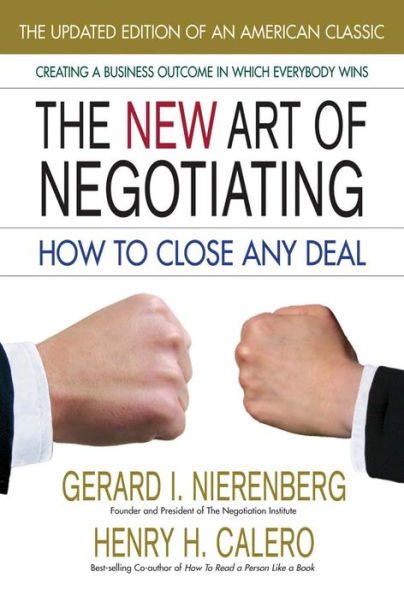Introduction
“Negotiating in the classic diplomatic sense assumes parties more anxious to agree than disagree.”
—Dean Acheson
Nearly every day of our lives—and, no doubt, your life, too—has involved some sort of negotiation, major or minor. We have long seen ourselves as problem-solvers. And from the moment we realized that every negotiation involves problem-solving, we have seen ourselves as negotiators, too. We believe that every obstacle that hinders negotiation, every issue of contention, is merely a problem that needs to be solved. And the best way to solve such problems, or negotiating issues, is to get all involved parties working together toward an “everybody wins” solution.
That cooperative spirit is one of the first fundamentals we highlight in The New Art of Negotiating. In Chapter 1, we introduce you to the way we understand and define “negotiation”—what characterizes that term. And approaching a negotiation not as a game but as a cooperative process or enterprise is a key concept. Chapter 2 is also important for a solid background on negotiating; it discusses why humans, in general, have a tendency to negotiate, and therefore why the skills of negotiating are so important to our species. With that solid background accomplished, we enter into a more detailed study of how to conduct a negotiation.
While you’re polishing your understanding of what it means to negotiate, why not polish your personal presentation? Chapter 3 brings us into the specifics, scrutinizing what makes a successful negotiator just that—from important skills to winning personality characteristics. Now what about the actual negotiation? It should start with great preparation. So Chapter 4 walks you through a step-by-step preparation agenda. That’s followed by Chapter 5’s discussion of effective techniques to use once the negotiation is underway. Included in that chapter is significant advice on how to break an impasse and how to avoid damaging assumptions.
If you are part of a negotiating team, then Chapter 6 is definitely for you. It analyzes the role of the chief negotiator or manager and then offers a section on team dynamics. Chapter 7 continues the focus on dealing with others, but delves into the psychology of how to read other people. This entertaining part of the book investigates such things as facial expressions, sounds and silence, gestures, and even gender tendencies. And finally, Chapter 8 gives you a few last words of advice, dispelling certain misconceptions that might prevent you from being the best negotiator you can be, and suggesting a battery of questions to ask as you perform a self-assessment of your work.
The material in this book has been gathered from our shared professional experiences and from the many seminars on negotiating that we have conducted over several decades. Everything we recommend has been tested by real people, including ourselves, and has proven effective. Throughout the chapters, we use quite a collection of humorous anecdotes and helpful examples. After all, we want you to enjoy the journey to becoming a successful negotiator. Take what you can from the pages of this book, and use it well. We applaud you for taking the step to developing more persuasive, more powerful, more artful negotiation skills.



